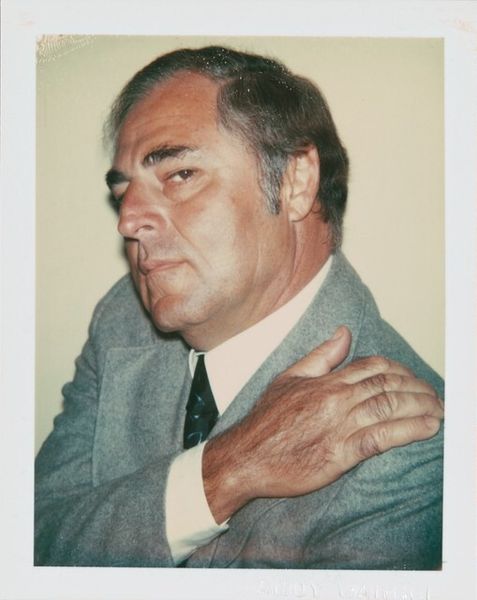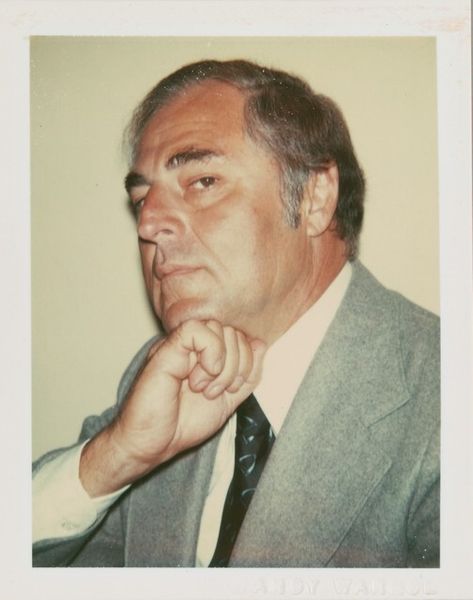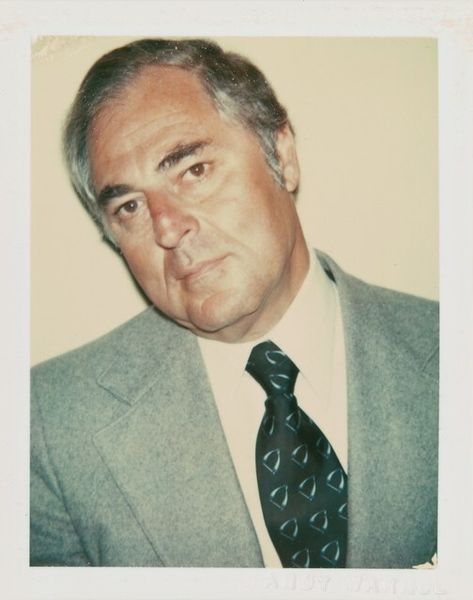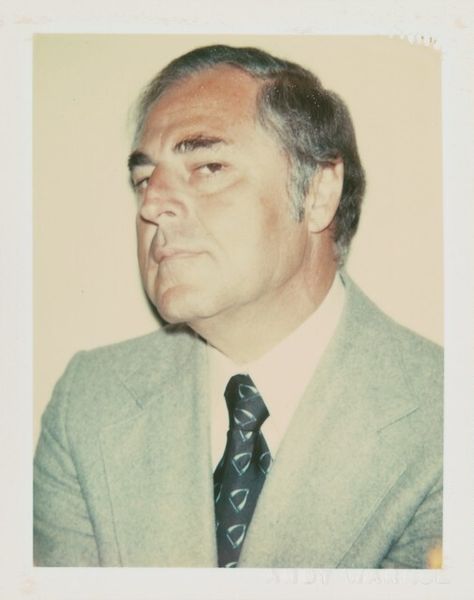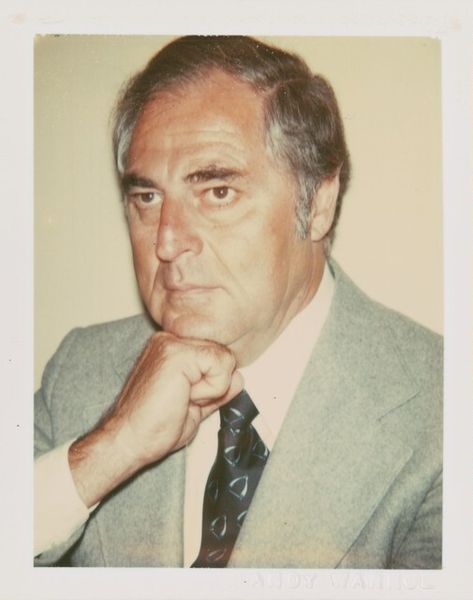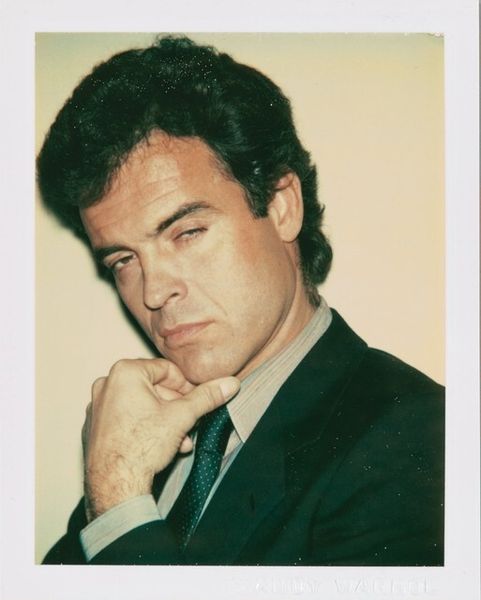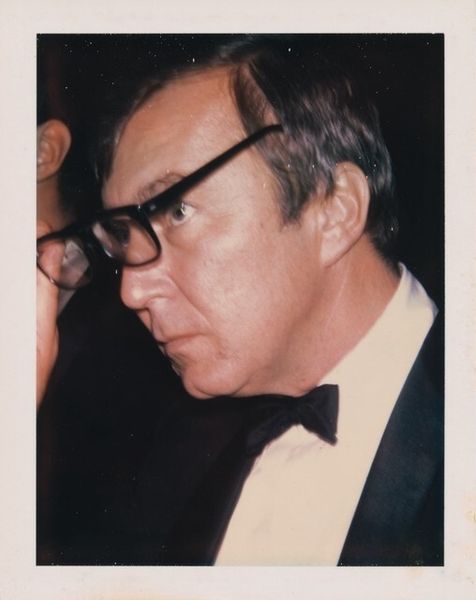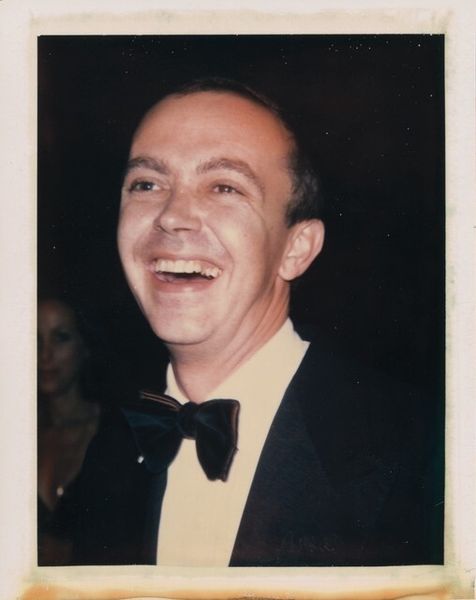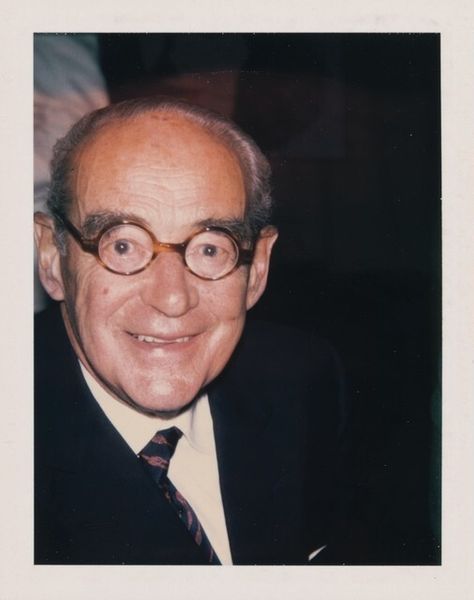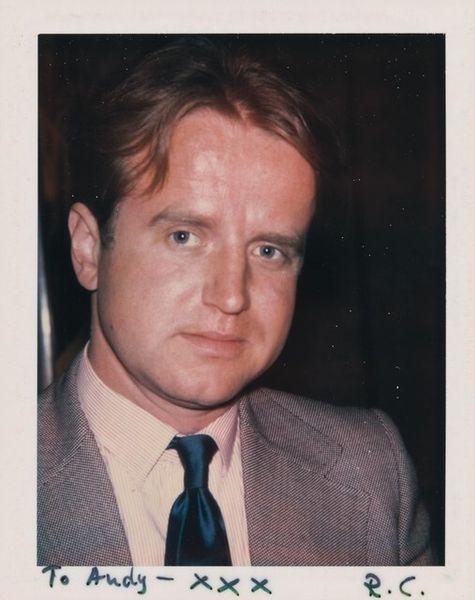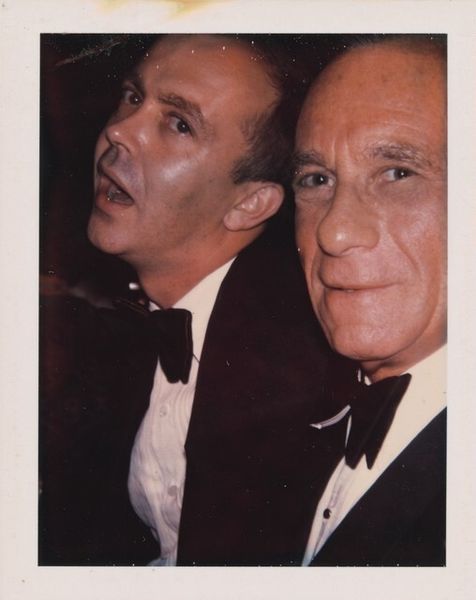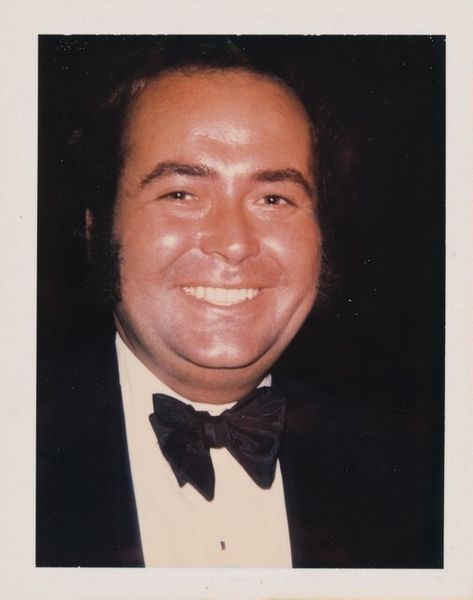
Dimensions: image: 9.5 × 7.3 cm (3 3/4 × 2 7/8 in.) sheet: 10.8 × 8.6 cm (4 1/4 × 3 3/8 in.)
Copyright: National Gallery of Art: CC0 1.0
Editor: So, here we have Andy Warhol's "Miles Fiterman" from 1975, a C-print photograph. There's something very staged, almost confrontational, about his gaze and hand on his shoulder. What's your take on this particular portrait, and what cultural factors might be at play? Curator: It's intriguing, isn't it? Considering Warhol's fascination with fame and wealth, this portrait participates in a specific discourse about power. Fiterman, presumably a man of some influence, is presented in a style that blurs the line between candidness and calculated image-making. We need to think about the context of portraiture itself – who gets memorialized, and how. Warhol's Pop aesthetic flattens the image, yet there’s a sense of striving for permanence and legacy that runs counter to this flattening. Editor: That push and pull is interesting. Do you think Warhol is commenting on the subject's ambitions, or is he implicated in them himself? Curator: Absolutely both. Warhol's work often reflects his own ambitions. He's not simply documenting celebrity culture, he’s actively participating in shaping it. Think about the socio-economic landscape of 1970s America: what did it mean to have your portrait done by Warhol at that time? The very act becomes a statement. And look at the muted colors; do they reflect a specific cultural moment, or are they timeless in some sense? Editor: It feels almost like he's trying to normalize power through art. Thank you, I will never see Warhol’s portraits the same way! Curator: And I understand better how this single image participates in a much wider cultural story.
Comments
No comments
Be the first to comment and join the conversation on the ultimate creative platform.
